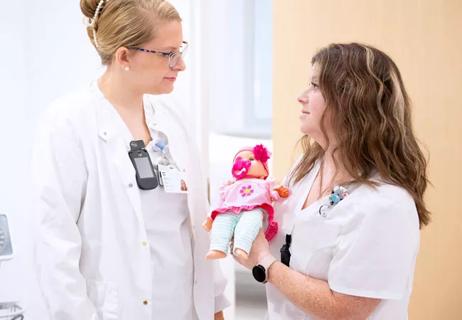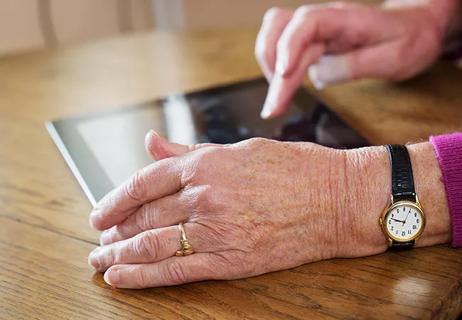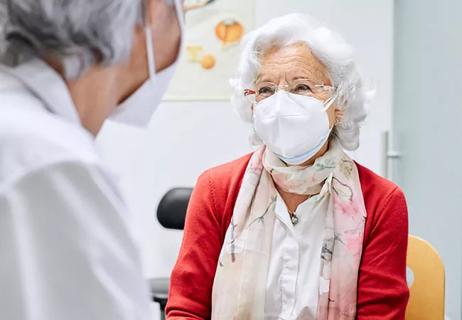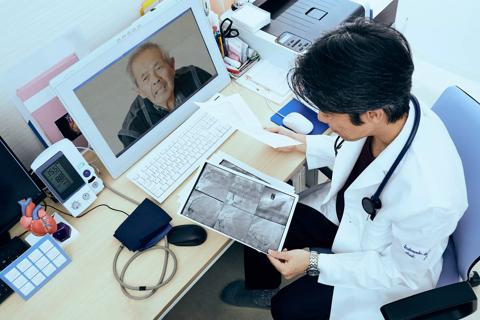Study suggests a role for KardiaBand when paired with physician review

A newly FDA-approved smartwatch accessory can record heart rhythm and successfully differentiate atrial fibrillation (AF) from normal sinus rhythm (SR) through an automated algorithm, according to a Cleveland Clinic investigation. The study, which will be presented March 11 at the American College of Cardiology’s 67th Scientific Session (and simultaneously published in Journal of the American College of Cardiology), also showed that the accuracy of interpretation gets even better when the accessory is supported by physician review.
Cleveland Clinic is a non-profit academic medical center. Advertising on our site helps support our mission. We do not endorse non-Cleveland Clinic products or services. Policy
The findings suggest that the wearable technology, known as KardiaBand™, can help screen patients before presentation for elective cardioversion to avoid unnecessary procedures, among other potential uses.
KardiaBand, which consists of a software app for an Apple Watch® and a sensor band that replaces one of the watch’s straps, provides a 30-second recording of an ECG rhythm strip when the wearer places a thumb on the sensor band. The app contains an algorithm for automated detection of AF.
“Our objective was to determine how accurately KardiaBand and its algorithm can differentiate AF from sinus rhythm compared with physician-interpreted 12-lead ECGs,” says senior author Khaldoun Tarakji, MD, MPH, a Cleveland Clinic electrophysiologist. In November 2017, the device became the first smartwatch healthcare accessory to be approved by the FDA, “but we wanted to test it ourselves to determine how well it would perform in clinical practice,” Dr. Tarakji explains.
To that end, he and Cleveland Clinic colleagues prospectively enrolled 100 consecutive patients (mean age, 68 ± 11 years) with chronic AF who were scheduled to undergo cardioversion. Upon presenting for the cardioversion procedure, all patients were given a KardiaBand-equipped smartwatch and trained in its use, after which they underwent traditional ECG assessment and a 30-second KardiaBand recording. If cardioversion was still indicated, they underwent ECG and KardiaBand testing after the procedure. KardiaBand recordings were then compared with the physician-reviewed ECGs and also reviewed by two blinded electrophysiologists, with these readings compared to ECG interpretations.
Eight patients did not undergo cardioversion because they presented in SR; these patients were excluded. Among the remaining patients, a total of 169 pairs of ECG and KardiaBand recordings were available for comparison (each patient had two before and two after cardioversion).
“This study shows that KardiaBand provides excellent sensitivity and good specificity in identifying AF,” says Dr. Tarakji. “The numbers improve further with physician overview of these recordings, indicating that even unclassified KardiaBand strip recordings could be of value to reading physicians.”
KardiaBand carries the benefit of enabling patients to record their rhythm at any time, as opposed to only when they are wearing a Holter monitor or at a physician’s office. “We can catch intermittent episodes when they happen, and we’re not limited to a specific duration of monitoring time,” Dr. Tarakji says. He adds that wearable devices like this can also reduce time spent responding to false alarms if a recording taken at the same time shows normal rhythm.
Yet many questions remain about how KardiaBand and similar products may ultimately be used in practice. Dr. Tarakji cites a few examples:
“Future studies will focus on how we can use these smart devices intelligently to make sure they’re improving quality of care rather than just producing noise for physicians,” he observes.
A parallel goal, he says, is to ensure that the devices provide value by making care delivery more efficient. Noting that patients currently need to pay for KardiaBand out of pocket, Dr. Tarakji says that “developing a richer body of research evidence is the best way we can demonstrate cost-effectiveness to healthcare payers.”
Indeed, KardiaBand could prove cost-effective by allowing patients who are in SR to avoid needless trips for elective procedures, such as in the case of the eight patients in the study who were found to be in SR when they presented for cardioversion and did not require the procedure. Other potential uses of KardiaBand for the longitudinal management of AF patients could well prove cost-effective too.
Regardless of how quickly such cost-effectiveness evidence may come, Dr. Tarakji says clinicians cannot be passive in the face of technologies like KardiaBand. “Patients will come to us with new products, and we can’t turn away,” he observes. “We need to test these products and find ways of responding to the information they deliver in a way that improves patient outcomes, all while remaining mindful of both patient and physician satisfaction.”
The researchers report that KardiaBand’s manufacturer, AliveCor, provided smartwatches for the study but was not involved in the study’s design, implementation, data analysis or interpretation.
Photo at top courtesy of AliveCor.

Pilot study confirms feasibility of conducting additional research on the novel treatment

Longer hospitalization does not mean a safer, faster recovery for patients age 70+

Structured data helps identify older adults at risk for poor outcomes, defines patients who require more comprehensive assessments

Self-administered tool can be completed in 10 minutes in waiting room

Social prescribing turns leisure activities into good “medicine”

A large geriatric study aims to find the answers

Analysis underscores how telehealth can help pinpoint elder abuse